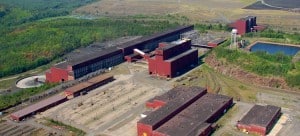
The company hoping to open up the first copper-nickel mine in Minnesota’s history submitted applications for three permits today, with several more applications to follow.
The permit applications come after the project’s long-lasting environmental review was deemed “adequate” by the Department of Natural Resources in March.
The applications include permits for discharging wastewater from the mine, using water at the site, and construction and maintenance of dams around the basins that will hold mine waste from the processing plant.
“Formal submission of water-related permit applications is another important milestone for PolyMet and the NorthMet Project,” said PolyMet President and CEO Jon Cherry. “We recognize that water is one of Minnesota’s most valuable resources and we have taken extra time and effort to ensure that our permit applications detail the ways in which we will protect this resource and meet the various regulatory standards required for Minnesota’s first copper-nickel mine.”
The company stated that it plans to submit permits related to air quality and its Permit to Mine in the weeks ahead. The Permit to Mine will dictate much of how the mine would be operated, and is expected to be a key point in the debate over whether to allow the mine to proceed.
In a Facebook post, the Minnesota Center for Environmental Advocacy stated it believes the applications are built on poor information.
“In the Environmental Impact Statement, the DNR relied on PolyMet’s conclusion that it would not pollute nearby waters based on a faulty water model, and neither DNR nor PCA ever ran that model independently to verify the results,” the organization stated.
The Mining Truth coalition criticized PolyMet for planning to use the 40-year-old tailings basin that had been created for a taconite mine, pointing out that its pumps failed in 2015, releasing 144,000 gallons of water into local streams.
The permit applications were submitted to the Minnesota Pollution Control Agency and the Department of Natural Resources. Both agencies plan to assess the permits, seek input from technical experts, and then consider drafting a permit. Public input will be accepted at that time.

